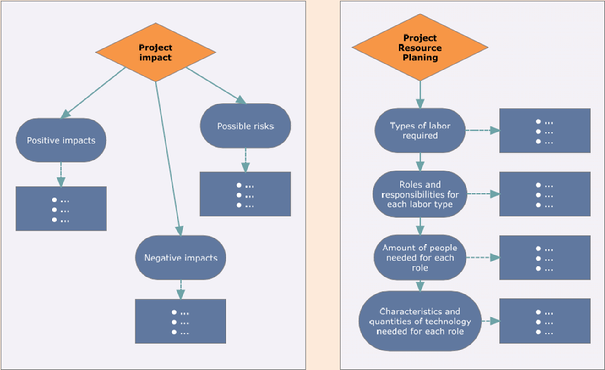By Bas Bronsing, René ter Haar, Arne Schmidt
‘Impact on Organization’ is a tool/activity of the information strategy method, the ‘four cycle’ method, developed by H. Salmela and T. Spil .

This tool can be applied in the forth cycle, the ‘Authorizing actions’ cycle that consists of:
1.Identifying organizational implications
2.Defining Criteria for decision making
3.Authorizing final decision
The organizational impact of implementing IS projects will be described by a framework of the guiding questions: What, Why, When, Who, Where and How.
Question | Answer | Methods |
What (is Impact on Organization) | ‘Lists organizational implications/consequences (both positive and negative) for each proposed project, as seen by users and specialists.’ | The organizational impact analysis can be put into use to evaluate proposed projects as well as existing projects. |
Why (is Impact on Organization useful) | Assure an efficient (regarding time, money and people) accomplishment of the IS/IT project and bring up new insights for further possible use of IT in the organization. | •Create a Gantt chart •Carry out a feasibility study •Discuss with stakeholders •Create a Baseline Project Plan |
When (should Impact on Organization be made) | In the first phase of the | Classify and rank the project in comparison with other projects by using the value chain analysis and evaluate the project according to: •strategic alignment •potential benefits •feasibility |
Who (should do Impact on Organization) | •Member of top management •Steering committee (members from several areas of the organization) •User department (departmental manager) •Development group (IS manager) | Arrange your stakeholders and assure that all brought forward points by every stakeholder are heard and used for making the decision. |
Where (should Impact on Organization take place) | The impact on organization analysis can be accomplished on several places. | Let stakeholders decide on the place to assure that they feel the most motivated, creative and comfortable. |
How (Impact on Organization should be made) | 1.give a clear insight in the consequences of the project for the internal environment 2.give a clear insight in the consequences of the project for the external environment 3.structure the gathered information and assure that they are studied by all stakeholders participants of the analyses 4.convert information into a list of advantages and disadvantages with the help of creative sessions with the stakeholders | Take all the previous described tools and combine them with: •the Critical Success Factor analysis |
References
Hoffer, Jeffrey A., George, Joey F. and Valacich, Joseph S. 2004. Modern Systems Analysis and Design. 4. Edition. New Jersey : Prentice Hall PTR, 2004.
Porter, Michael E. 1998. Structural Analysis and Competitive Strategy. Competitive strategy: techniques for analyzing industries and competitors. New York : Free Press, 1998, pp. 29-32.
—. 1998. The Value Chain. Competitive Advantage: Creating and Sustaining Superior Performance. New York : Free Press, 1998, pp. 36-52.
Salmela, Hannu and Spil, Ton A.M. 2002. Dynamic and emergent information systems strategy formulation and implementation. International Journal of Information Management. 2002, 22, pp. 441-460.
Ward, John and Peppard, Joe. 2002. Strategic Planning for Information Systems. 3. Edition. Chichester : Wiley & Sons, Ltd, 2002. pp. 44-47, 206-208, 208-213.
